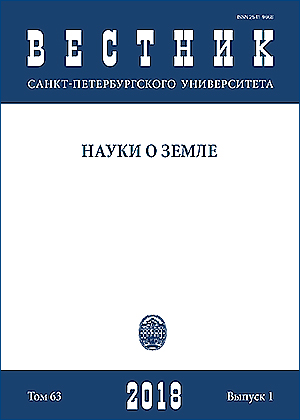A response of diatoms from the small lake on heavy metals effect in an urban environment, Republic of Karelia
DOI:
https://doi.org/10.21638/11701/spbu07.2018.106Abstract
A study of modern surface bottom sediments of the small lake Lamba located in the city of Petrozavodsk is presented. Chemical analysis shows that the content of heavy metals (Pb, Zn, Cd, Cr, Co, Ni, Cu, Mo, V, W) is significantly enriched in the sediments related to ferruginous sapropels. This is caused by the influence of the urban environment and the processes of the technogenic pollution as a result of the transboundary transport of metals. Based on the study of the fossil diatomaceous flora of Lake Lamba numbering 124 diatom species, a connection is established between the anthropogenic impact on the water body and the changes in the structure of the diatom complex. Indicator species of the negative influence of the increased concentrations of Pb, Cd, Tl, W and other pollutants on the ecosystem, as well as species showing resistance to the investigated heavy metals, are determined. Finely dispersed particles of lake deposits containing vanadium, which is one of the priority pollutants of the reservoir, are found to accumulate in the valves of the diatoms.
Keywords:
diatoms, bottom sediments, heavy metals, small lake, Petrozavodsk, Republic of Karelia
Downloads
References
metal contamination from abandoned tailings. Science of the Total Environment 425, 231–241.
Downloads
Published
How to Cite
Issue
Section
License
Articles of "Vestnik of Saint Petersburg University. Earth Sciences" are open access distributed under the terms of the License Agreement with Saint Petersburg State University, which permits to the authors unrestricted distribution and self-archiving free of charge.






